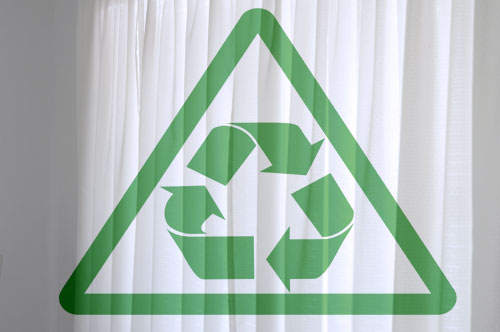Richard Moyle from Horizon Window Treatments has written a guest blog about Green Window Treatments.
There are a number of options available for those who want to be as eco-friendly as they can when choosing their window treatments. Most major window treatment product manufacturers offer at least one product that is green in some way. But what makes a window treatment green? Understanding what characteristics to look for can help you make a better informed decision when you select how you want to cover your windows.
Energy Efficiency ñ This is probably the most common quality in a window treatment product that is advertised as being green. The majority of heat that you lose or gain in your home happens through your windows. All window coverings provide at least a small amount of insulation, but there are some products that were made specifically to increase energy efficiency by reducing heat loss and gain. Cellular (or honeycomb) shades are the most effective as they can reduce heat loss by as much as 50%. If installed correctly, they create a sealed air space that makes it very difficult for heat to escape through the window.
Natural/Renewable Materials ñ Window treatments that are made from natural materials like cotton, silk, linen or wool are green because they can be recycled or re-used. Try to avoid curtains made from petroleum based synthetics such as nylon, rayon and polyester. Also, try to stay away from curtains that have been treated to resist stains or be fire retardant as the chemicals used for these treatments are toxic. Wool is naturally flame retardant, so there is no reason to use curtains that have been treated with chemicals.
Impact on Air Quality ñ How a window treatment affects air quality is another big factor in how green it is. If you follow the previous guidelines about selecting window treatments made from natural fabrics, you shouldnít have a problem with this. Stay away from plastic and faux wood blinds as they usually contain polyvinyl chloride (PVC). This chemical releases carcinogenic dioxin into the air during manufacturing and contains plasticizer called phthalates that can trigger respiratory problems and interfere with the bodyís hormonal systems.
There are a number of options available for those who want to be as eco-friendly as they can when choosing their window treatments. Most major window treatment product manufacturers offer at least one product that is green in some way. But what makes a window treatment green? Understanding what characteristics to look for can help you make a better informed decision when you select how you want to cover your windows.
Energy Efficiency ñ This is probably the most common quality in a window treatment product that is advertised as being green. The majority of heat that you lose or gain in your home happens through your windows. All window coverings provide at least a small amount of insulation, but there are some products that were made specifically to increase energy efficiency by reducing heat loss and gain. Cellular (or honeycomb) shades are the most effective as they can reduce heat loss by as much as 50%. If installed correctly, they create a sealed air space that makes it very difficult for heat to escape through the window.
Natural/Renewable Materials ñ Window treatments that are made from natural materials like cotton, silk, linen or wool are green because they can be recycled or re-used. Try to avoid curtains made from petroleum based synthetics such as nylon, rayon and polyester. Also, try to stay away from curtains that have been treated to resist stains or be fire retardant as the chemicals used for these treatments are toxic. Wool is naturally flame retardant, so there is no reason to use curtains that have been treated with chemicals.
Impact on Air Quality ñ How a window treatment affects air quality is another big factor in how green it is. If you follow the previous guidelines about selecting window treatments made from natural fabrics, you shouldnít have a problem with this. Stay away from plastic and faux wood blinds as they usually contain polyvinyl chloride (PVC). This chemical releases carcinogenic dioxin into the air during manufacturing and contains plasticizer called phthalates that can trigger respiratory problems and interfere with the bodyís hormonal systems.

